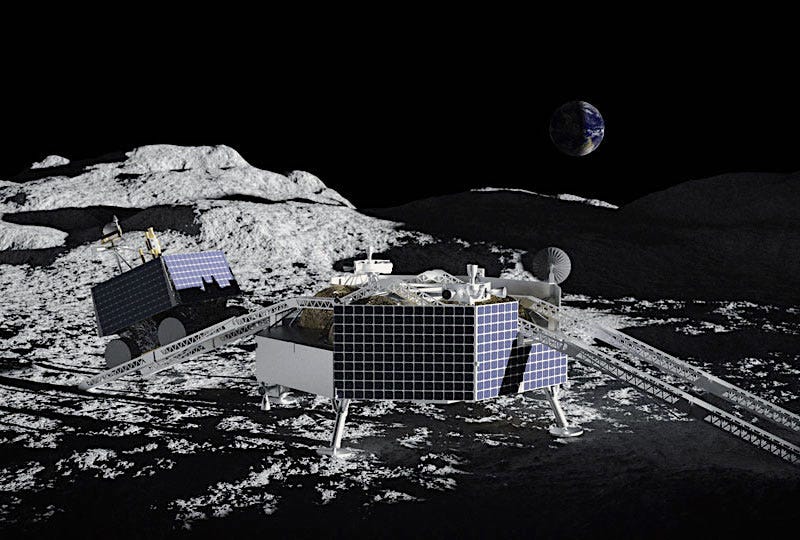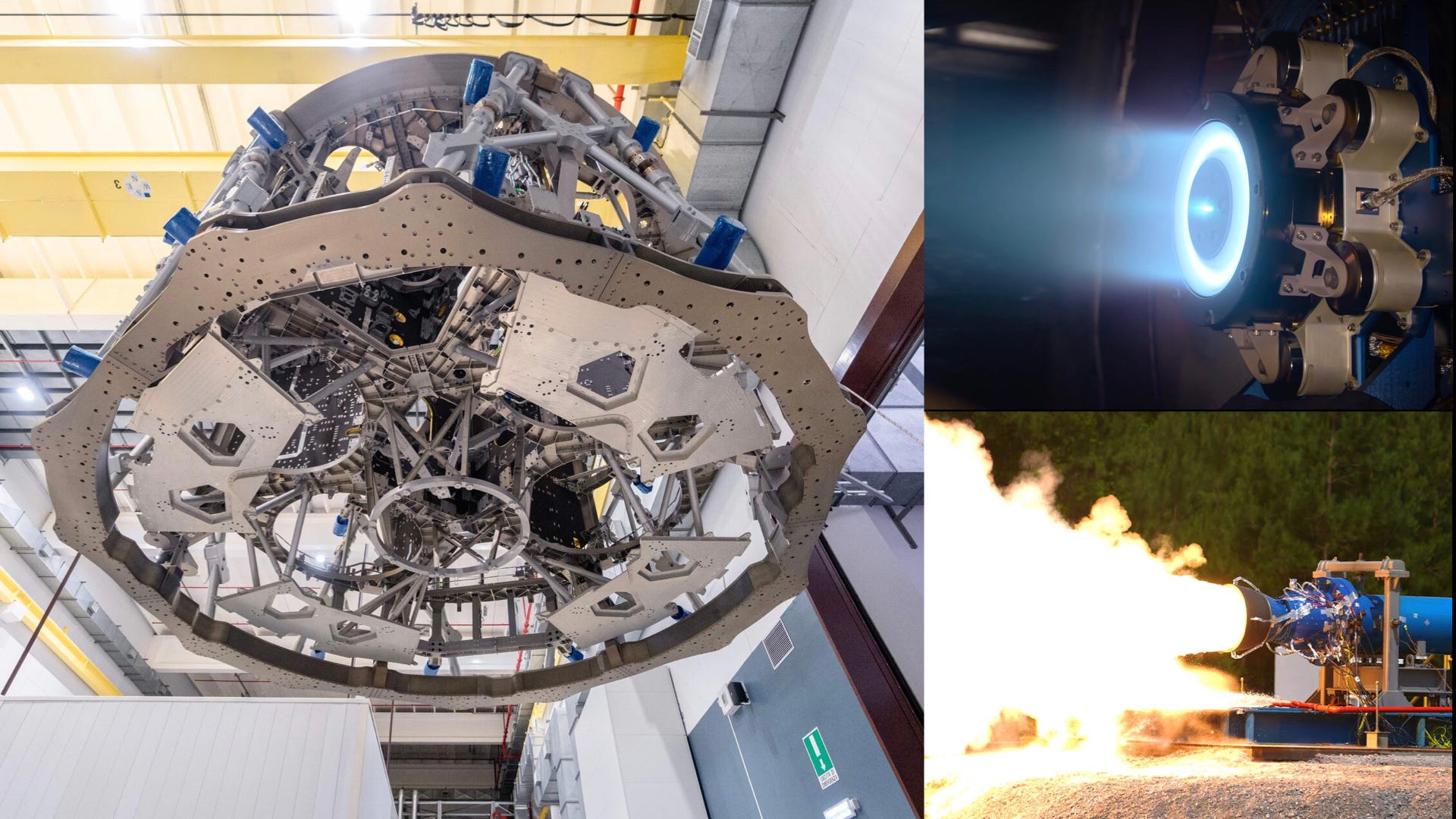Moon Monday #81: Lunar missions on the verge of launching and future hardware coming to life
There has been a plethora of updates last week as well as last month on upcoming lunar missions so today’s Moon Monday is presented a bit differently—developments are grouped by type. Despite some more mission delays, seeing so many spacecraft on the verge of launching and so much future mission hardware coming together, piece by piece, is exciting!
Upcoming Moon missions
- The NASA-funded and Advanced Space-built CAPSTONE spacecraft is now encapsulated inside the fairing of its Rocket Lab Electron launch vehicle but won’t launch on June 13 anymore due to it requiring last minute flight software changes. The mission intends to prove the feasibility of the unique fuel-saving elliptical lunar orbit that the NASA-led international Gateway station will use later this decade.
- On June 6, NASA’s fully stacked SLS rocket arrived at its launchpad for a fourth wet dress rehearsal test attempt, currently scheduled for June 20. If the test is successful this time around, NASA could launch the Artemis I mission to send an uncrewed Orion spacecraft around the Moon in late August at best.
- Astrobotic’s first Moon landing mission as part of NASA’s CLPS program will likely launch early next year instead of later this year. The main engines for ULA’s Vulcan rocket that will loft Astrobotic’s lunar lander into space are still being assembled at Blue Origin. After ULA receives the engines, no earlier than August, it would take about six months to test and integrate them into the rocket and prepare for launch. Astrobotic itself is still assembling its lander after which the lander will undergo space environmental testing to ensure it can survive launch and its time in space.
- On the other hand, Astrobotic competitor Intuitive Machines hasn’t provided a recent update on their first CLPS Moon landing mission’s status or revealed its flight hardware. An indirect NASA update tells us that the mission is still launching later this year while announcing that the SpaceX Falcon 9 rocket carrying the lander to space will also host the agency’s 14-kilogram Lunar Flashlight CubeSat as a secondary payload. After attaining a polar lunar orbit, Lunar Flashlight will use near-infrared lasers and a spectrometer to identify locations and states of water ice inside permanently shadowed regions on the Moon’s poles. Lunar Flashlight was originally supposed to fly on Artemis I along with 10 other small satellites but couldn’t be completed in time.
- Thankfully, ispace’s first Moon landing mission still seems to be on track for launch later this year, as is South Korea’s Danuri/KPLO orbiter slated for its August launch while Russia’s Luna 25 Moon landing mission might launch in September 2022 instead of August.
- NASA completed yet another test of how its water-ice-studying VIPER rover will drive out of a ramp on Astrobotic’s large Griffin lander after touchdown on the Moon’s south pole in 2023. The test used the most realistic hardware design yet for the rover prototype and the lander ramps. NASA will begin constructing the VIPER flight rover in late 2022 at their Johnson Space Center, aiming to deliver it to Astrobotic in mid-2023 for integration with Griffin before launching soon after on a SpaceX Falcon Heavy rocket.

Future Moon mission hardware coming to life
NASA is completing assembly of the SLS rocket’s core stage to be used for the Artemis II mission to carry crew around the Moon in 2024. In the meanwhile, the mission’s nearly fully assembled Orion spacecraft, which the astronauts will be in, was powered on for the first time last month. Its systems will be extensively tested over the next few months chiefly to make sure its flight computers and components are communicating as expected.
NASA completed manufacturing the 10 motor segments of the SLS rocket boosters to be used during launch of the Artemis III crewed landing mission. The booster segments will next be integrated with the avionics and the remaining booster hardware. In parallel, the mission’s second rocket stage is taking shape in ULA’s factory.
NASA is nicely progressing through a test campaign of 6-and-12-kilowatt solar-electric propulsion developmental engines, whose flight versions will maneuver the NASA-led international Gateway station to and in lunar orbit after launch in 2024. The tests are designed to demonstrate that Gateway’s propulsion system should work for at least 15 years around the Moon.
Related: Last year, NASA established the terribly acronym’d Joint AdvaNced propUlsion inStitute (JANUS) as the latest addition to their Space Technology Research Institutes. To help NASA utilize high-power electric propulsion systems for human exploration of the solar system, JANUS will develop ways to overcome limitations in their ground testing.
Airbus has completed building the structure of the fourth European Service Module that will power the Orion spacecraft on NASA’s Artemis IV mission. The company will complete the module’s integration and conduct related tests over the next few months. The 15,000-kilogram module provides propulsion, water, oxygen, thermal control, and electrical power to Orion.
Artemis IV, launching no earlier than 2027, will not attempt a lunar landing but instead advance the Gateway’s assembly, which by that point would be in its unique lunar orbit. Specifically, Artemis IV will deliver the ESA- and JAXA-developed International Habitation module (i-HAB) to the Gateway. Artemis IV will not only be the first mission to send astronauts to the Gateway but also be the first flight of the SLS rocket’s Block 1B version with an upgraded upper stage.
NASA and Northrop Grumman continue testing subscale versions of a new solid rocket motor design to be used for the more capable boosters debuting on Artemis IX on a SLS Block 2 evolved rocket sometime in the 2030s. The Orion spacecraft on top of SLS will feature an upgraded main engine for the second time during Artemis IX instead of its current Shuttle-era one.
If you’re wondering that “..if the big orange rocket must exist by law anyway, at least these upgrades should’ve been in place since the very first Artemis mission..”, then you aren’t alone. But better late than never I guess. More importantly though, this update also means NASA is keen on keeping the momentum for our return to the Moon alive, something crucial in its own right considering past failed efforts.

The launch tower that’s still an artist’s render
In a scathing new report, NASA’s Office of Inspector General (OIG) painfully details the poor progress on the 118-meter Mobile Launcher 2 to be made for the SLS rocket’s Block 1B and Block 2 configurations. The OIG points out that the launch tower’s cost-plus contract NASA originally awarded to Bechtel at $383 million in 2019 has ballooned to $960 million primarily because Bechtel underestimated the project’s scope and complexity. The cost will likely rise further during the construction phase, which hasn’t even begun because the design work is pending! The OIG also blames NASA for Bechtel’s shortcomings because the agency awarded the contract before the specifications of the SLS rocket’s upgraded upper stage were finalized.
The OIG estimates that the Mobile Launcher 2 will be built no earlier than November 2026, after which it will need to tested, meaning Artemis IV has a very slim chance of actually taking off in 2027 on a SLS Block 1B rocket. NASA is considering converting parts of the contract from cost-plus to fixed-price to accelerate progress though there may not be enough room for significant improvements.
Thanks to Open Lunar Foundation, The Orbital Index and Epsilon3 for sponsoring this week’s Moon Monday.
More Moon
- On June 7, France became the 20th country to sign the U.S. led Artemis Accords for cooperation in lunar and space exploration. It’s also the sixth such European country, following the UK, Luxembourg, Italy, Poland and Romania. Given that the French space agency CNES is not just a significant part of ESA but has also been a strong NASA partner, this is a notable bag for the Accords.
- On June 1, Aegis Aerospace announced that they’re extending their SaaS-model of providing scientific technology testing facilities at the International Space Station to the Moon. As the first step, Aegis is putting a multi-hardware testing facility for several customer experiments as a small, single-package paid payload on Intuitive Machines’ fourth Moon landing mission in 2025.
- After putting out a Request for Proposals late last year, Canada is funding five of its companies to conduct concept studies for developing infrastructure that can be contributed to NASA’s Artemis Basecamp and beyond. The seven studies range from food production to mining and power generation. Canada will later fund five of these studies to start prototyping hardware.
